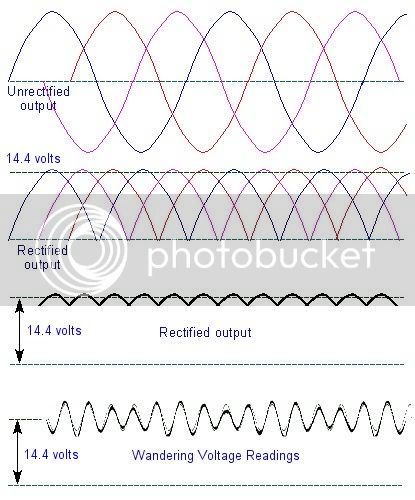ionbeam
2 FUN
Sounds logical and seems to make sense. But... that is definitely not the case. The rectifiers are more than up to the task. I have designed high current power supplies that switch much faster than the stator frequency, the rectifying diodes are more than up to the task. I've also looked at the FJR charging system several times with my o'scope (as recently as this Tuesday during an Electosport stator transplant) and among the horrifying things I saw, diodes weren't responsible.+1 - it's been a long, long time since I messed with electricals, but I wonder over the same thing.I can't help but think this is some behavoir from the rectifier not being able to keep up with the frequency (or current) coming out of the stator. And, not necessarily an "problem".
Note several things:
- all the charging systems worked fairly stably at one time
- the bouncing happens at all RPMs including idle where the frequency of the stator is pretty low and doesn't get worse as frequency goes up
- The frequency is out of the range of most DC meters so they wouldn't see the noise. -- Even a meter set to AC may not see stator fluctuations because it is too fast. Details on why this is true only by personal request
- any stator pulses missed by the diodes would make radios and music players scream with audo noise that would be near impossible to eliminate
- a side note, the noise I see on my electrical system would make a radio and/or music player buzz like mad without a lot of noise supressors
As Radman and Warchild have noted, the final solution will most likely be a system fix including stator, R/R, harness upgrade with bigger wire + better connectors and possibly replacing the main fuse with a circuit breaker.



















![fjackets Real Lambskin Leather Biker Jacket — Quilted Cafe Racer Zip Up Moto Mens Biker Jacket | [1100115] Johnson Ruboff, XL](https://m.media-amazon.com/images/I/41Pgh1CH-jL._SL500_.jpg)
































